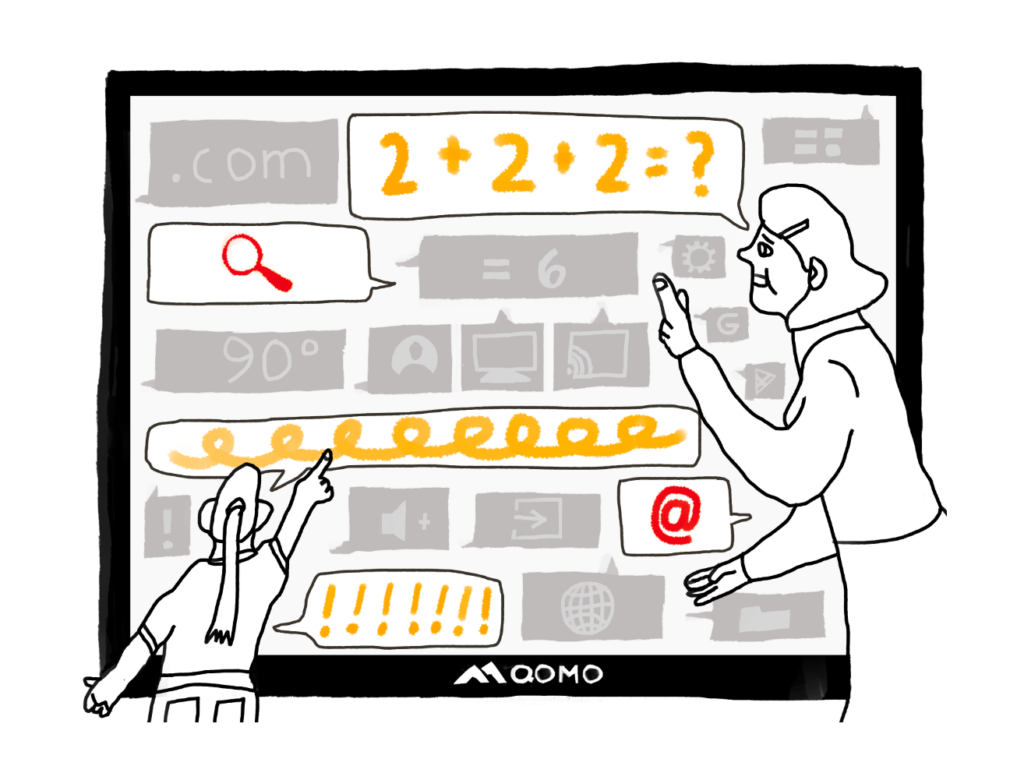Qontent by QOMO

What is Interactive Learning? How to Incorporate It into Your Classroom
Interactive learning emphasizes engagement through hands-on activities, collaboration, immediate feedback, and technology-enabled experiences. In the classroom, educators can achieve interactive learning through group discussions, collaboration, review games, and by incorporating technology into everyday lessons.
Benefits of Interactive Learning
Getting students to stay engaged in the classroom is getting harder and harder nowadays. Traditional learning often falls short when it comes to engaging students due to limited attention spans and a lack of application of the learning material. For some students, being in a distracting environment like a classroom can make focus even harder to come by. But when educators create intentional, interactive learning environments, it makes learning active for students, making it impossible to sleep through a class or get distracted elsewhere. Interactive learning encourages students to interact with learning materials, explore concepts in depth, foster deep understanding, and develop critical thinking skills.
What are some different forms of interactive learning?
- Digital Simulation: This allows students to replicate real-world scenarios and experiment in a controlled, explorative environment.
- Group projects: Projects encourage students to collaborate and work together to achieve common goals.
- Peer teaching: This method allows students to take turns teaching each other. It reinforces understanding and retaining information, but also encourages communication.
- Interactive panels: This technology allows for dynamic presentations and full-class participation where students can engage directly with the material presented to them, or add discussion thoughts.
- Gamification: This method encourages educators to integrate lessons into learning games, making the material more engaging and fun.
All in all, interactive learning can be an educator’s classroom engagement goldmine. It encourages students to interact with learning materials, explore concepts in depth, foster deep understanding, and develop critical thinking skills. So let’s get you started.
How do you incorporate interactive learning into your classroom?
You don’t need to completely reinvent the wheel to add interactive learning opportunities to your classroom. You could simply tack it onto a lesson you’re already teaching, or incorporate it as part of a review for an upcoming assessment.
Gamifying assessment reviews is the easiest way to start! Jeopardy and Kahoot! are games that have quiz-like attributes. For a team-style review, a Jeopardy website like JeopardyLabs lets you build your own Jeopardy game for free! This can be a fun, competitive review for students that presents their learning material in a new way. You’re sure to see the energy in the classroom come to life!
If you’re looking for a more collaborative way to start, try using an interactive display in your classroom. Interactive displays are a great tool for students to use to be hands-on with their teaching material. Interactive displays that have full Google compatibility and EDLA certification make it easy to download apps or visit websites as a classroom. Websites like PhET Interactive Simulations have engaging simulations you can present after a lesson, or have students come up and try as a class. QOMO’s BundleBoard i is a great option for larger class sizes; this interactive display features 50 points of touch, a faster processor, and screens as large as 98” so everyone can participate at once!
QOMO Classroom Tip: Interactive learning can also be something your students do independently. If you teach a language or math class, use apps like Duolingo for individual review or extra credit incentives!
Use interactive learning tools to see what works well with your students
Every student is unique, and educators understand that they don’t all learn in the same way. By implementing interactive learning into your classroom, you’re taking the extra step toward a personalized learning experience for your students.
Personalized learning is important because it meets individual students’ needs in the classroom. Some students learn by reading and taking notes, some by visual demonstrations, and others with hands-on activities. While it can be challenging to gauge what your students will succeed with at first, implementing a variety of learning strategies will help you meet your students where they are—interactive learning is part of that.
How do you know if it’s working for your classroom? While it can be challenging to measure how students are doing in real time after an activity, audience response tools make it simple without inducing the stress or anxiety of a formal assessment or pop quiz. The QClick is an interactive learning tool that keeps things fun for your student, all while delivering instant insights that help you do more of what is impacting your students.
QOMO Classroom Tip: Create your own true/false quiz or survey about comprehension. Hand out your QClicks and let students submit answers as you go. Later, you can check how they did—and have information on each individual student’s thoughts and comprehension.
Want to schedule a product demo? Schedule a Demo | Ready to get a quote? Get a quote

